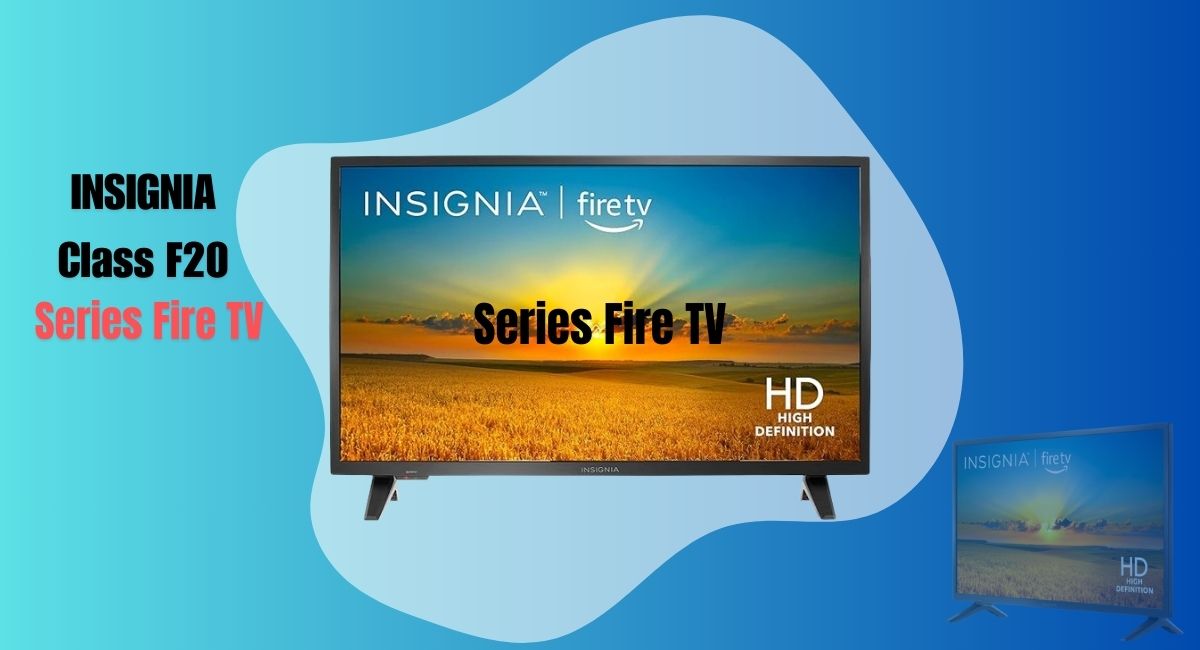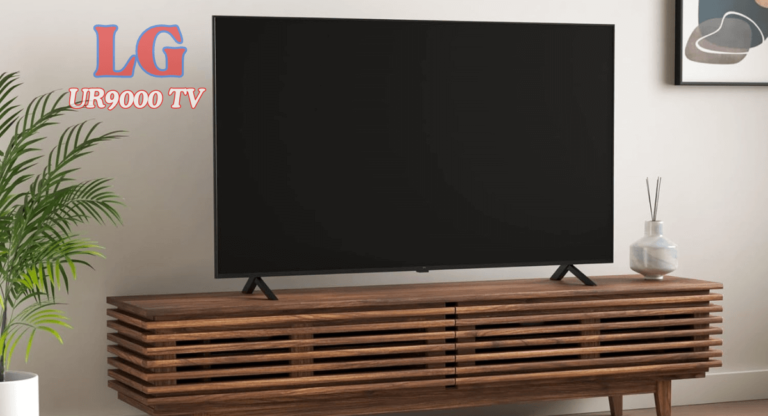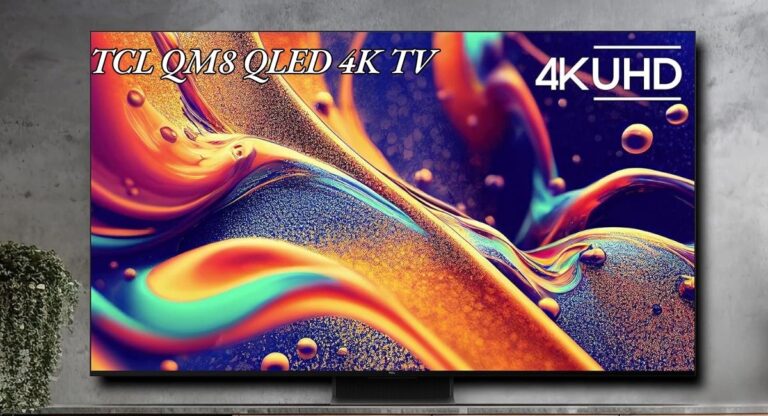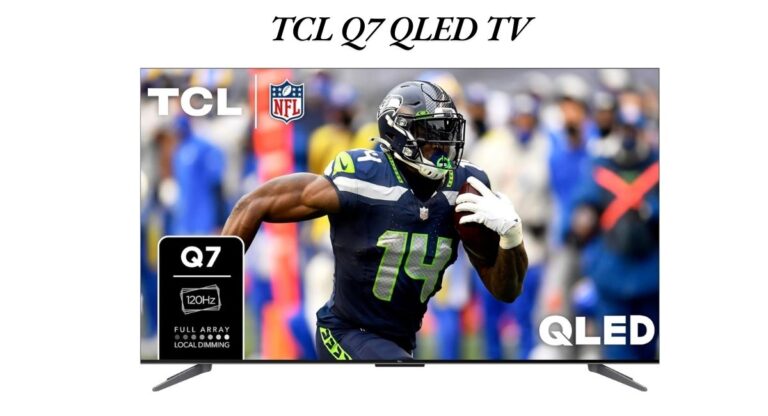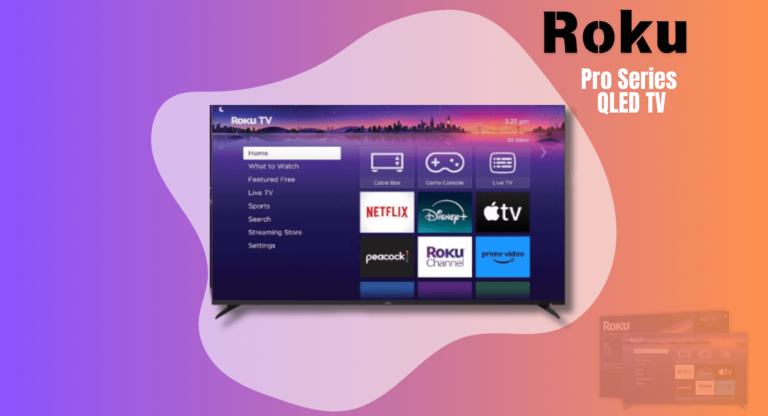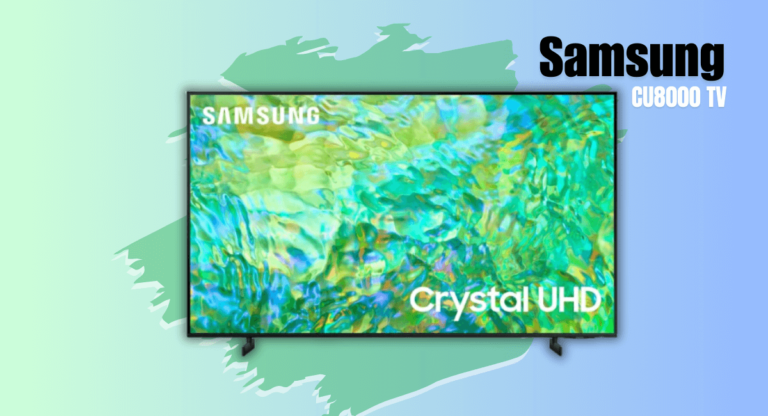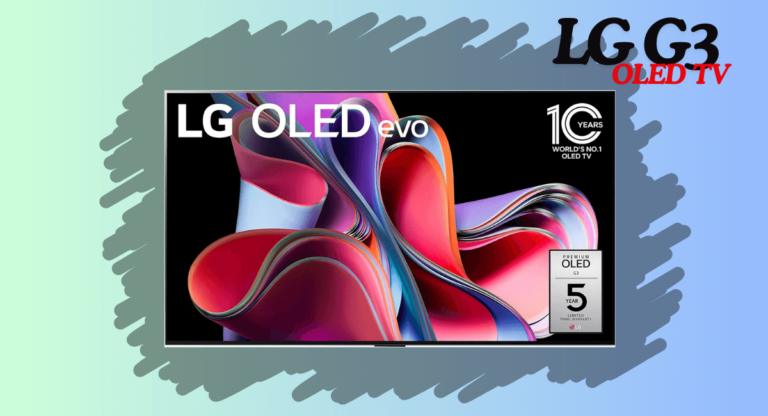INSIGNIA Class F20 Series Fire TV Review
As far as smart TVs are concerned, the INSIGNIA Class F20 Series Fire TV has to be one of the best affordable smart TVs available in the market today. It keeps up with the trend, by allowing content to be streamed through a Fire TV interface that is built into the television. In this regard, let’s look at the specifications, design, performance, as well as the total worth of This TV.
Reasons to Buy
- Great value for a budget-friendly smart TV.
- Fire TV Integration
- Voice Control
- Compact and small size best for small places
- Good Picture Quality
Reasons to Avoid
- Only 720p, which may not satisfy users wanting 1080p or 4K.
- Built-in speakers may lack depth and power for immersive audio.
- Materials may feel cheaper compared to higher-end models.
- Fewer ports might restrict connectivity options.
- No HDR Support
Design and Build Quality
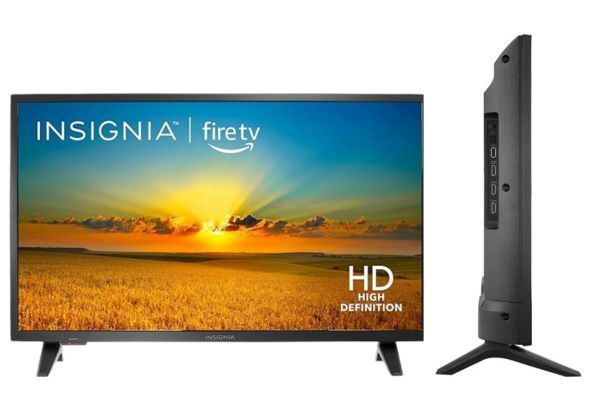
This television also possesses a contemporary architecture, which is why this set can be suitable in most rooms. The aiming of the narrow edgeless model in this TV screen saves on the screen size and the black kolorit gives a nice modern appeal which can fit different styles. While the overall aesthetics are pleasing, the gadgets have a very basic outward appearance and feel as they are made from plastics and metals. Nevertheless, construction is sturdy for the price even in the long run of usage.
The base is made from plastic and is able to comfortably support the television although there is slight wobbling when the television is tapped like VIZIO M50QXM-K01. It’s also worth noting that the stand does not leave much space between the table and the TV unit, which can be problematic if you want to place a sound system under it. Dimension of the 32 inch model is 43.0″ x 10.4″ meaning placing the device is not much of a problem on most entertainment consoles.
If you happen to be running out of space, then wall mounting should also be a good option for this TV. It goes hand in hand with the VESA 200×200, hence can be mounted on most walls that come with a bracket of the type. On the downside, it should be pointed out that this TV is rather thick concerning the maximum thickness which is 3.27 inches (8.3 cm). However, there are some models which are slimmer than those bulky previous units but this one is likely to stick out from the wall through mounting.
The metal back of the TV is unmistakable but simple and clean without any embellishments out of the norm. There is not really a lot of great cable management so cords may be exposed depending on how elaborate one’s entertainment center is.
In addition, the screen bezels are a little wider than ideal, measuring 0.63 inches (1.6 cm). Although this does not affect the viewing ability that much, it does however make the image itself look awkward relative to its peers which tend to have super thin bezels. The screen/the back of the tv Regarding the overall construction of the TV, it is quite satisfactory. No gaps and no slack are present which mean that the TV will always be firm and durable during operation.
When viewed from the side, the TV is noticeably bulkier than some other members of the series. In this case, it is only a little less than the thickness of the Toshiba Fire TV Edition 2018, which contributes towards the reason that this model can be classified as a low-end or budget friendly device.
In general, the look of Indossing Fire TV combines the utility and low price of the device. It doesn’t have the premium touch that the higher end models have but offers considerable strength and good design for those looking for an inexpensive TV that does its job rather efficiently. Some of the thinner bezels and a slight wobble of the stand definitely can be resulted in, but they aren’t that crucial to change the overall experience for the majority of the people.
Display and Picture Quality
Home entertainment lovers will have an easy time choosing a TV from this one since it is available in a selection of 24 to 32 inch sizes. The INSIGNIA Class F20 Series Fire TV has Full High Definition (1080p) which means that most people will find it useful for viewing on a daily basis since the images produced will be clear and detailed. The colors are pretty great although they do not have as much saturation as the more expensive models do. But for those who want to especially watch, stream or play at home without worrying too much about the quality, considering the reasonable price of the set, the quality is still really good.
The TV is backlit LED and it has a native contrast ratio of 4660:1 which makes it build very deep blacks when used in dark rooms. This is helpful particularly on the contrary, in front viewing where the ambient luminance is quite low. Of course, no, it does not have local dimming so it is a little bit lagged in very dark scenes where other higher end models may stand out. The direct backlight keeps the brightness of the entire LCD screen even throughout the screen making it suitable for use in moderate rooms but it does not shine as much outside in bright rooms with quite a lot of glare.
In the SDR mode, it can be said that the TV’s brightness is quite good as there is neither a rise nor decrease in brightness regardless of the amount of the screen that has been lit up. This uniformity comes in handy when watching normal content, rather than this the TV is inefficient when it comes to its HDR levels. The TV will not be bright enough to take full advantage of HDR material, therefore it is unable to perform a HDR magic of offering deep contrasts and bright highlights. Gray uniformity is also respectable, depicting some cloudy patches as well as darker edges. Furthermore, there is mild DSE that may be seen on sports or fast paced action content.
Another big drawback of the TV is in the viewing angles of viewing. Blacks get deeper, and colors start to change as soon as you start going off-center. At some 25 degrees, the image turns dark; the intensity reduces by half which is not good for people in the group since they will have to sit at different angles. Ideally, one should be in front of the TV for the best viewing experience.
TV’s semi gloss screen was better at managing glares with the help of the relief pattern, but only in the case of average lit rooms. However, instead curtains won’t be beneficial and I would recommend not to position the TV in front of windows or daylight and bright light sources when it is done.
After a fine-tuning, the TV is able to provide satisfactory color accuracy, although it is far from achieving the best results. Available calibration parameters are few, hence the range of the color corrections ends up being rather small. For instance, while the white balance dE is sufficiently lowered below the just noticeable impact level, by this stage the color dE is persistent enough for some color inaccuracy to be perceived. Gamma also doesn’t conform to the ideal curve either, with low tones appearing brighter than they are supposed to at lower light levels and shadows being clipped at high light levels. The general color temperature tends towards a little cooler, as compared to the recommended 6500K.
The TV handles the problems of upscaling lower-quality content with ease. Smooth upscaling is seen on DVDs and 720p content while clear detailed images are seen on 1080p content such as cable, streaming, and Blu rays. However, some sub pixel dimming defects can be seen from a very close distance, the same as you would notice in models such as the Toshiba Fire TV and the TCL 5 Series S517. Things like these can create somewhat of a cut up screen effect, in wow and flutter, albeit not a coring.
I am glad to note that the VA panel employed in this TV does not suffer from burn-in which is a useful attribute for the long term use of the TV without permanently retained images. In all, although there are some limitations in terms of brightness and viewing angles, the Insignia F20 Series is decent enough for its price region and is especially preferable for users focusing on daily watching and streaming.
Smart Features and Interface
The integration of the Fire TV platform is one of the major features of the INSIGNIA Class F20 Series Fire TV. The users have the ability to access a plethora of streaming services including Netflix, Amazon Prime Video, Hulu, Disney + among many others all thanks to a single interface. Navigation through the Fire TV platform is also worth mentioning as it facilitates switching from one app or setting to the other seamlessly. Hence, it is ideal for users who wish to view their desired content especially within the shortest time possible without the need to change systems or devices.
Fire TV OS is based on OS version 6.0 and is sufficiently pleasant. Fetching apps and features such as Youtube or backlight requires up to 5 seconds which is fair for a television in its price range. The platform has no bugs and navigation overall is rather rapid and comfortable. There is a variety of apps available and most of them work without a hitch. The YouTube application is not included and is accessed via a browser, which is somewhat of an inconvenience although it has the same benefits as native apps once opened into the device.
Netflix covers HDR streaming options as does other services offered, but this comes with its restrictions. A typical example can be with YouTube since any HDR capable videos on YouTube will not be streamed. Another negative observation about Amazon Prime Video is that it doesn’t play HDR or 4K contents if used under VPN or low bandwidth internet conditions which is quite disappointing among the users. That said, transferring files via USB is possible and users can watch HDR movies using a USB flash drive.
Anyway that can be noticed on the INSIGNIA Class F20 Series Fire TV is the pause live theater. The TV can be paused for about 2 minutes by default but this time can be increased to a maximum of sixty minutes if a USB storage is attached. This is an advantage to the viewers of the live telecasting since some interruptions can be adjusted for.
The TV also works with Alexa which helps the users to run a few of the basic operations by themselves. For instance, a user can simply say, “Change source to HDMI 1” or “Search Netflix for Marco Polo.” Though Alexa integration is very useful some limitations still exist. A command such as, “Change backlight to 5:00,” which is a very simple command, is not possible and requesting, “What time is it?” to the device is also not possible. Nevertheless, most simple things such as searching for content, controlling smart devices and other relatively simple tasks are great with Alexa. It should be noted that the reality is that the complete character of Fire TV OS is available in the US. Voice control is one of those features that is generally not available on the US version only, content search for example.
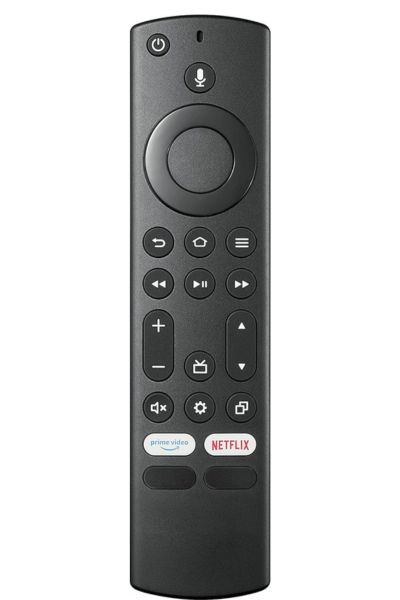
The remote control that is included with the INSIGNIA Class F20 Series Fire TV has full support of the Amazon Alexa service. This is simple to use as it can be used to issue voice commands to the DTV and other intelligent systems in the house. Voice control via Alexa does work quite well for most functions, however, some more delicate features like adjusting the intensity of the backlight have to be done manually.
Most of the apps work smoothly as expected but there are times where some of them may take quite a while to respond if not load completely. Nevertheless, it usually provides a very good and smooth streaming effect making it possible for one to enjoy watching different programs without too much trouble. There is also a CEC menu control connectivity, to be able to control other devices connected to the TV like the game console or Blu-ray player using the TV remote.
Although there are not many additional smart features except for the Alexa integration and streaming services offered, core features will be more than adequate for the average viewer.
The Insignia F20 Series Fire TV is a good option if you are looking for a smart television that comes at a good price point and has a lot to offer in terms of smart features. This device lets the users smoothly and effortlessly utilize quite a variety of streaming services through the Fire TV platform, and for those who have a knack for smart home integration, Alexa voice control is an added convenience.
Although quite a few users will be disappointed by the limited HDR performance of the TV along with limitations on what acknowledgment about voice commands can be offered, the TV still is quite good for a user looking for a smart TV with a lot of functioning features.
Sound Quality
Still, while good pictures are necessary for a TV, a viewer’s experience is incomplete without the best audio quality. The F20 Series Fire TV from Insignia comes with built-in speakers, which are effective for primary usage but like most low-cost TVs, do not provide the abundant, rich sound offered by more costly models. Speech this is indisputably clear making it an appropriate tv set for similar use. However, the lower end or bass regions are woefully wanting, even more so during action scenes or music videos. The sound generated does not have that dense feeling or impact as would have been provided by a more powerful sound system.
However, there are limits to which one can go, having a flat response extending LFE frequency range of 135Hz in simple terms means very little bass and no satisfying thumps or rumbles to which audio is enhanced. Above this point the response is a little inconsistent and a fair middle range without brightness and details resulting in some sounds being flatter than normal. In addition to this, the TV is not that loud and when it is forced to louder settings, compression and pumping artifacts kick in, which reduces the sound quality.
While clear images are necessary when buying a TV, one’s satisfaction is not complete without the best sound equipment. Importantly, the INSIGNIA 32-inch Class F20 Fire TV has built-in speakers which are good enough for basic applications but like most inexpensive tv models, they do not deliver rich, full sound quality that is present in more expensive models.
The speech is well this clear speech makes the TV suitable for a similar use. However, they will painfully continue to find the low end or bass going missing even more during waiting scenes such as action scenes or those heavy music scenes. Many times this does happen and mainly because the normal audio does not have that fullness together with the effect that a stronger audio arrangement would have given.
As a consolation, however, the INSIGNIA Class F20 Series Fire TV flat response includes IFE extension at the lowest of 135 Hz. Above this the IFE extension suffers in quality and bass mostly non-existent which makes listening quite disappointing. There is a high war which accepts a speaker with flat response extending LFE frequency range of 135Hz in simple terms suggests very less bass and no fulfilling thumps or rattles to which audio is made better.
Above this point the response is a little inconsistent and a fair middle range without brightness and details resulting in some sounds being flatter than normal. In addition to this, the TV is not that loud and when it is forced to louder settings, compression and pumping artifacts kick in, which reduces the sound quality.
Even though the performing distortion is above a certain threshold. At medium listening levels, approximately 80 dB SPL, the total harmonic distortion optimally does not exceed. Even at a maximum listening level, there is no critical THD increase, which is a good thing. Still, the TV’s maximum volume is relatively low, therefore, the stational forms may not be effective in large rooms or for users who like the sound to be turned up. What’s more, slight distortion peaks can also be found about 1KHz and about 2 KHz presenting some audio at this frequency range to come out as harsh, or somewhat polished.
For users, who would like to hear better sounds and take full advantage of the viewing experience of the TV, an external soundbar or speaker can be used with the TV. This improvement would include the enhancement of clarity of sounds with regards to the bass depending on the satisfactory performance improvement, hence enhancing overall memory processing of the event.
Performance and Connectivity
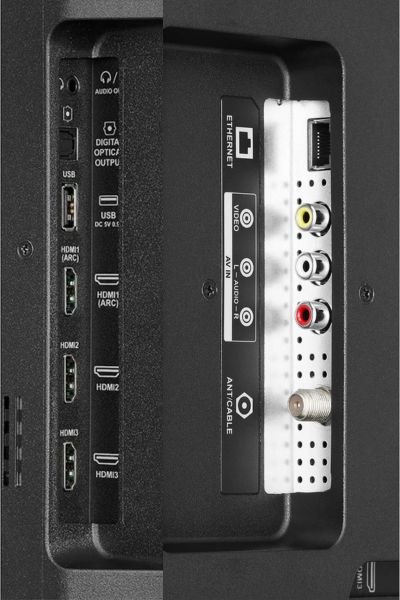
The INSIGNIA Class F20 Series Fire TV offers a decent number of connectivity features and is thus good for use in different setups. The smart TV has a number of HDMI ports, a USB port and also an Ethernet port which makes it possible for a user to connect devices such as gaming consoles, Blu-ray players or streaming boxes. These ports also enhance convenience in a situation where a user has various external devices plugging them in one PC.
Besides the usual connection wires, the TV set also has the ability to connect to the internet through Wi-Fi which is very useful when wanting to view the likes of Netflix, Hulu and Disney+. The Wi-Fi connectivity also works well and only depends on the user having a stable and fast internet connection which eliminates unnecessary lag even when streaming videos. This is appealing to people who are not very keen on watching cable TV or those who are completely against it.
With the 4k Fire TV, the F20 Series is satisfactory in terms of performance. Overall, the menus, apps and switching between them is relatively fast when necessary. The design of the interface is such that it facilitates ease in the retrieval of content and modification of relevant parameters. Disruptions in launching the favorite applications do not take long barriers hence the efficiency of the users are preserved.
Nevertheless, this model could undergo some delay while handling multiple applications or tasks at the same time. Such a situation is not common, although this may have some impact on performance in more demanding multitasking scenarios when using heavy apps. For the most part, it would not be a major concern for most users due to how fast they will be able to use the device in day-to-day activities even though they do not carry out advanced activities on the device e.g. game play but use it for basic activities like streaming, scrolling the Fire TV menu or making quick setting adjustments.
In relation to app load times, most of them will respond and load at acceptable speeds. Streaming media streaming app, which is incorporated into the Fire TV system, is designed to ensure the users do not wait long before accessing streaming applications but there are still some occasions on which an app may take longer to load however this does not affect the performance of the device. HD or Full HD videos are streamed smoothly with little or no interruptions and less buffering especially if the bandwidth is good.
For those who need basic multimedia and streaming functionality, the F20 Series is good enough in terms of the available connectivity features and performance. Additional ports make it possible to connect a number of different devices, while the Wi-Fi makes sure that the users are always able to be connected to streaming services. This is not to say that every single use case is perfect, as the television does stutter a few times during demanding multitasking.
In the TV’s defense, it does have commendable amounts of fluidity between app transitions and is able to pull up any content in a few seconds for its bracket. For the majority of the user base, and especially those who use the TV more for content consumption than creation, the F20 Series is a fairly powerful and well balanced device.
The Insignia F20 Series is designed well and offers an adequate level of connectivity and performance without domestic wi-fi usage. More connection options, which include HDMI, USB and Ethernet, redeems it a nice entertainment hub. Together with Wi-Fi for streaming, the Fire TV on the television remains very responsive to the user. Even though some more demanding applications may experience some slight delay in the device’s response, overall response of the device is good, rating this TV an excellent device for an average user who streams and engages in the basic multimedia activities.
Final Verdict
The INSIGNIA Class F20 Series Fire TV has all the features one would want and is priced reasonably for both remote users and the more laid back target audience. There is also a simple smart interface, good picture and reasonable sound, so that people looking for a cheap smart TV won’t be disappointed.
Hence if you are looking for a good all round TV which is within the budget, then This TV is something you should definitely look at. This is of course, keeping in mind that it would perhaps not measure up to more expensive models in picture detail or sound, what it provides for every dollar spent is hard to ignore. If you want other option, so check the VIZIO VFD40M-08.

